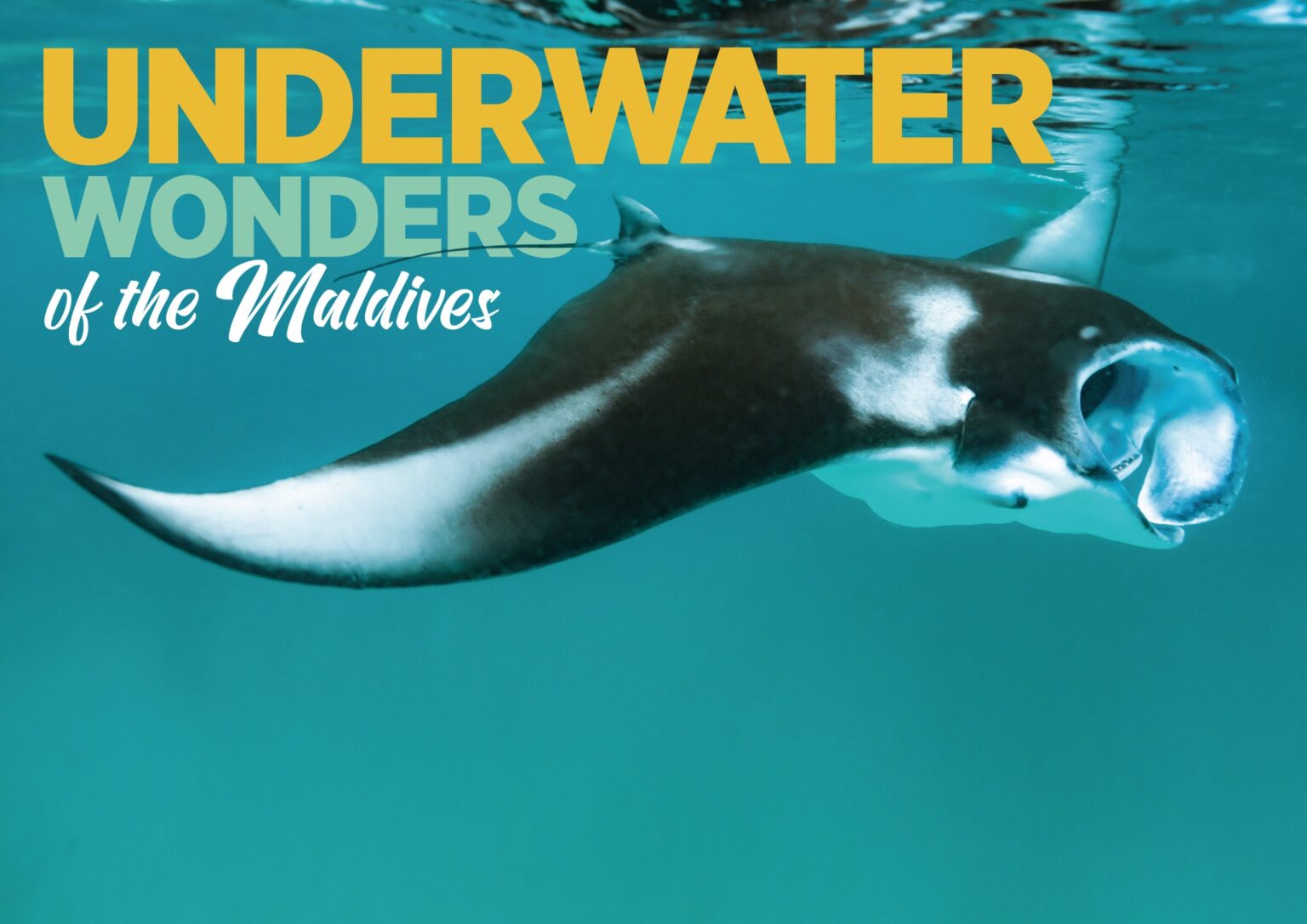Amanda Delaforce presents a whistlestop tour of the main diving areas in the Maldives, and looks at the pros and cons of liveaboard over land-based holidays
Photographs by Amanda Delaforce
The Maldives has earned a reputation as one of the world’s premier scuba diving destinations, attracting divers from all over the globe. This island nation, located in the Indian Ocean, is renowned for its incredible marine biodiversity, crystal-clear waters, and diverse range of dive sites.
With over 1,100 species of fish, five species of sea turtles, 21 species of whale and dolphin, and nearly 200 species of coral, the Maldives offers an unparalleled underwater experience.
The Maldives’ warm waters and tropical climate provide year-round diving opportunities, while its commitment to environmental conservation, has helped to sustain its reputation as a top destination for scuba diving. Here are my tips for diving in the Maldives, including the best dive sites, the ideal time to visit, and the various marine species you can expect to encounter on this bucket-list trip.
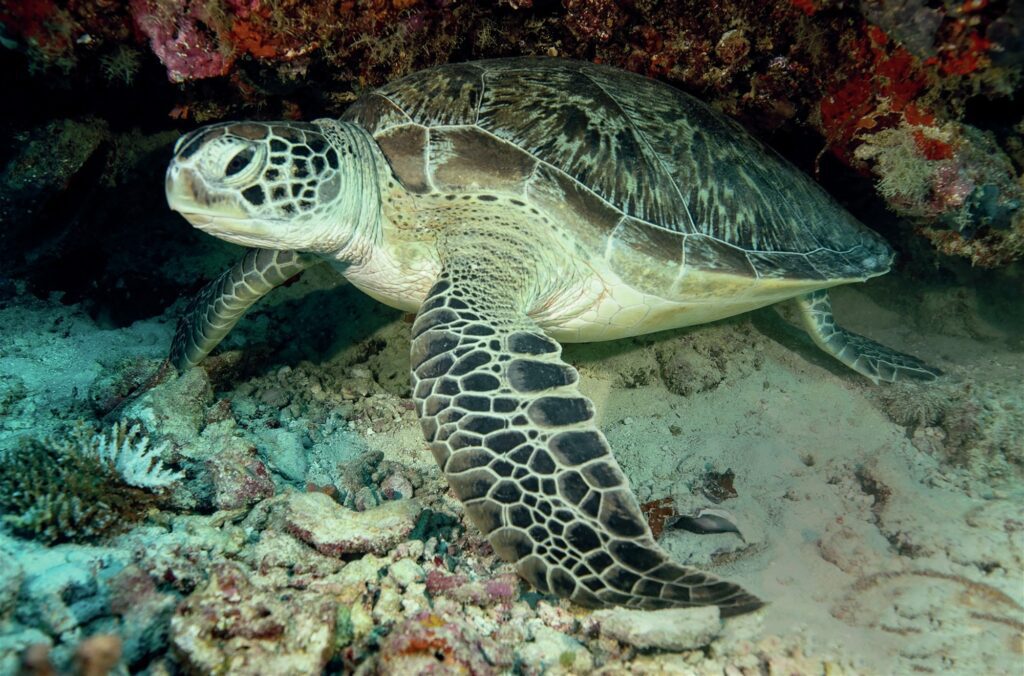
What makes the Maldives special?
The Maldives is a South Asian island nation in the Indian Ocean, consisting of a double chain of 26 atolls. It is known for its pristine beaches, crystal-clear waters, and luxurious resorts. Millions of visitors arrive every year to enjoy its natural beauty, water activities and relaxing atmosphere.
But, for me, the big draw is the diversity of marine life. Of all the world’s breath-taking dive destinations, none can compare to the Maldives’ sheer abundance of large marine animals, including sharks, whalesharks and rays.
The best time to visit the central and northern atolls is from September to November when the water is warmest and the visibility is crystal clear. January-March is better for the southern atolls.
The Maldives is the smallest Asian country in land area and population, with just over 500,000 inhabitants. The country’s official language is Dhivehi, and Islam is the dominant religion. The Maldives’ economy is primarily driven by tourism and fishing. The country has several protected marine areas, including whaleshark and manta ray feeding sites.
Northern Atolls: Maldives
The Northern Atolls of the Maldives are a hidden gem waiting to be explored. Bursting with vibrant coral reefs and The Maldives is a South Asian island nation in the Indian Ocean, consisting of a double chain of 26 atolls.
It is known for its pristine beaches, crystalclear waters, and luxurious resorts underwater caves, this region offers a unique diving experience. Located north of the capital city of Malé, the Northern Atolls are easily accessible by boat.
Raa Atoll and Baa Atoll are two must-visit dive sites in the Northern Atolls. Shark Thila, Nemo Thila, and Fish Head are popular dive spots offering a spectacular view of the underwater world. But the real highlight is Hanifaru Bay, located at the southeast edge of Baa Atoll.
Covering an area of just 1,200km², barely the size of a football field, Hanifaru Bay is one of the world’s top feeding hotspots for manta rays and has one of the largest concentrations of whalesharks in the Maldives.
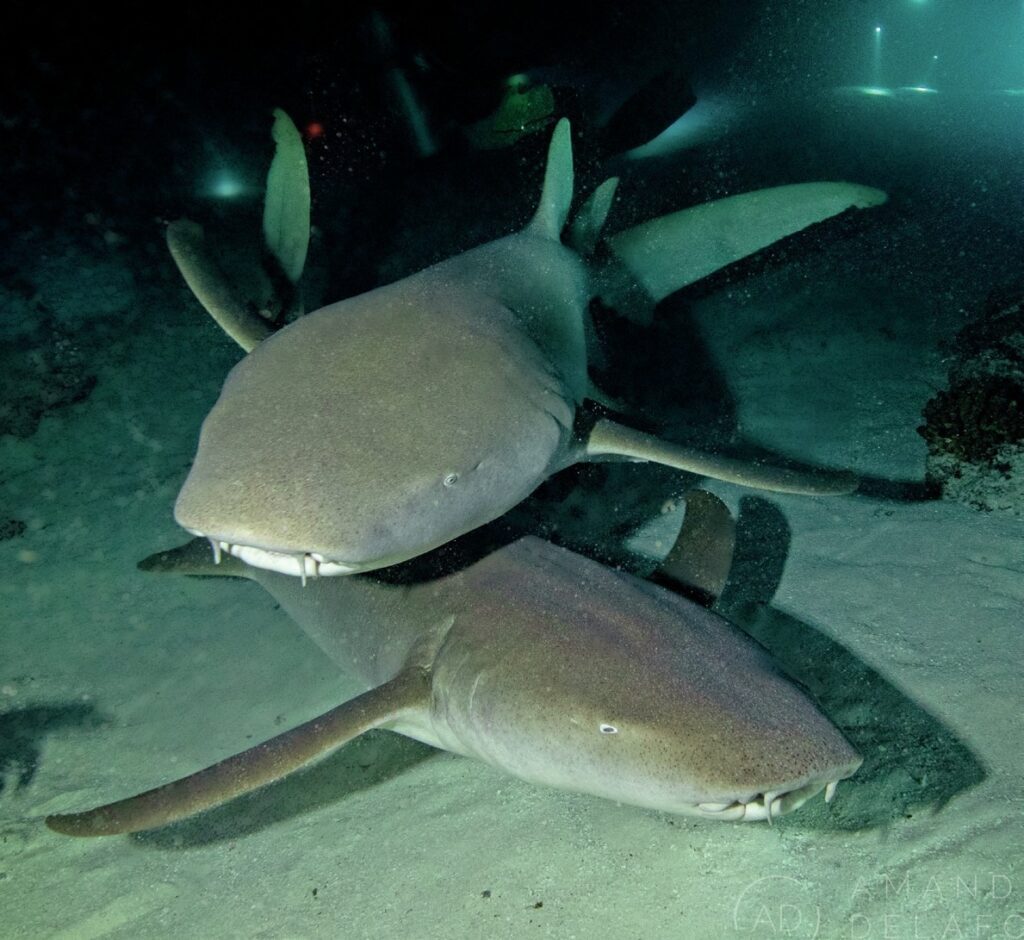
This UNESCO biosphere reserve is legally designated as a Marine Protected Area, making it a haven for marine life. Manta rays and whalesharks (Rhincodon typus) are graceful creatures that approach divers and snorkellers with gentle curiosity.
Encountering them is an unforgettable experience, and the conservation efforts of the Manta Trust, a wellknown and professional organisation, ensure the safety of these vulnerable animals known as the reef manta ray (Mobula alfredi).
Lhaviyani Atoll is another excellent spot for diving. It offers the chance to see spotted eagle rays, turtles, reef sharks, and a plethora of fish life. Underwater photography enthusiasts can capture stunning shots of manta ray feeding behaviours, such as chain, piggy-back, somersault, and cyclone feeds.
But capturing good images can be a challenge. The water can be rich in zooplankton, a microscopic animal that can create a milky, hazy, cloudy effect.
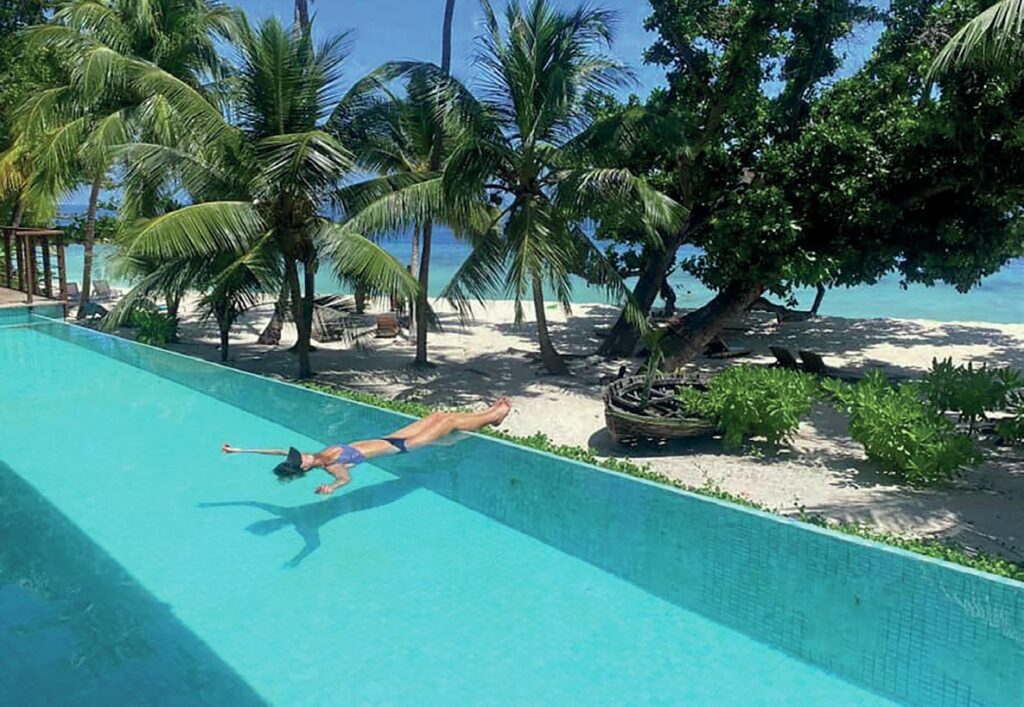
Central Atolls
The Central Atolls are home to pristine beaches and yearround warm water, perfect for swimming and diving. The region is also home to the capital city, Malé, making it easily accessible for visitors.
One of this region’s must-visit dive sites is the famous Alimatha Jetty. Located off Vaavu Atoll, this shallow reef teems with nurse sharks, rays, and schools of giant trevallies, making it an ideal spot for underwater photography and night dives.
Tawny nurse sharks (Nebris ferrungineus) are nocturnal animals, which means they are more active at night when they come out to feed. This makes night dives an excellent opportunity to see them in their natural habitat.
These bottom-dwellers are usually docile, can grow up to a metre and a half in length and are characterised by their dark brown or grey colour, with small dark spots.
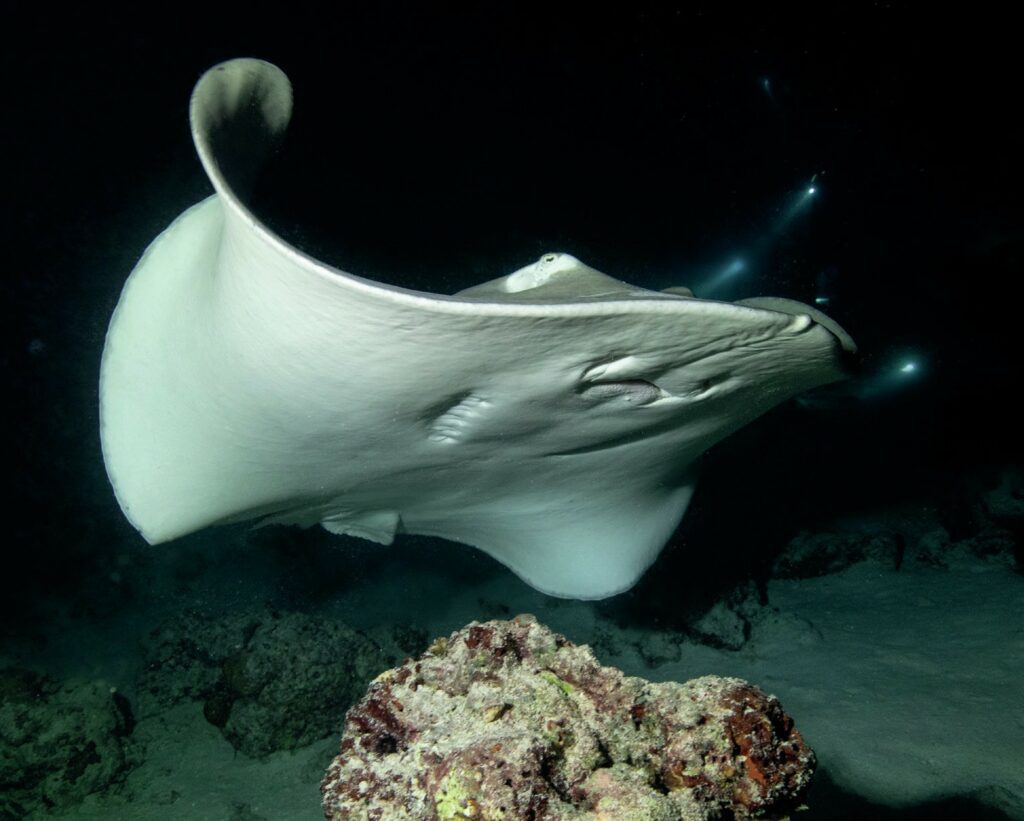
Another exciting dive site in Central Maldives is Thaa Atoll, where you can dive in a protected bay with whalesharks at night. Imagine getting a knock on your door in the middle of the night, telling you that whalesharks are off the back of the boat feeding!
You can then jump in the water and witness these gentle giants feeding in their natural environment. When taking photos underwater at night, lighting is crucial. You can use strobes or ambient light from divers’ torches. To make things easier, use shutter priority mode since it’s dark.
It’s best to get close to the subject, such as the tawny nurse sharks, to capture their different behaviours. At night, these sharks come alive, rolling around, being curious and filtering through the sand for food. This was a new experience for me when I dived here.
Central Maldives is also home to The Olive Ridley Project, a conservation organisation dedicated to protecting sea turtles and their habitats. Their efforts include rescue, rehabilitation, education, outreach, and scientific research.
The organisation collaborates with diverse groups to reach its goal and fill data gaps in sea turtle conservation. They are doing important work.
Southern Atolls
The Southern Atolls of the Maldives offer a refreshing escape from the tourist crowds, with Fuvahmulah Island being a standout destination for shark enthusiasts. Day trips from the island will take you to see tigers and hammerheads, or you can choose a liveaboard (more on that below).
The deep south is a must-visit for shark lovers, especially from January through March when the dry season brings calm seas, clear blue skies, and high visibility in the water. Head to South Ari Atoll (or Alifu Dhaalu Atoll), a designated protected marine area since 2009.
In 2010, in response to declining shark populations, the Maldives government implemented a nationwide ban on shark fishing, making the Maldives one of the first countries in the world to do so.
The ban has positively impacted the Maldives’ marine environment, with shark populations rebounding and increasing sightings of these magnificent creatures during dives and snorkelling trips. It has also benefited the local tourism industry, as shark watching and swimming tours have become popular activities for visitors to the Maldives.
Did you know?
The Maldivian archipelago is home to five of the seven species of sea turtles, green (Chelonia mydas), hawksbill (Eretmochelys imbricata), loggerhead (Caretta caretta), olive ridley (Lepidochelys olivacea) and leatherback (Dermochelys coriacea)
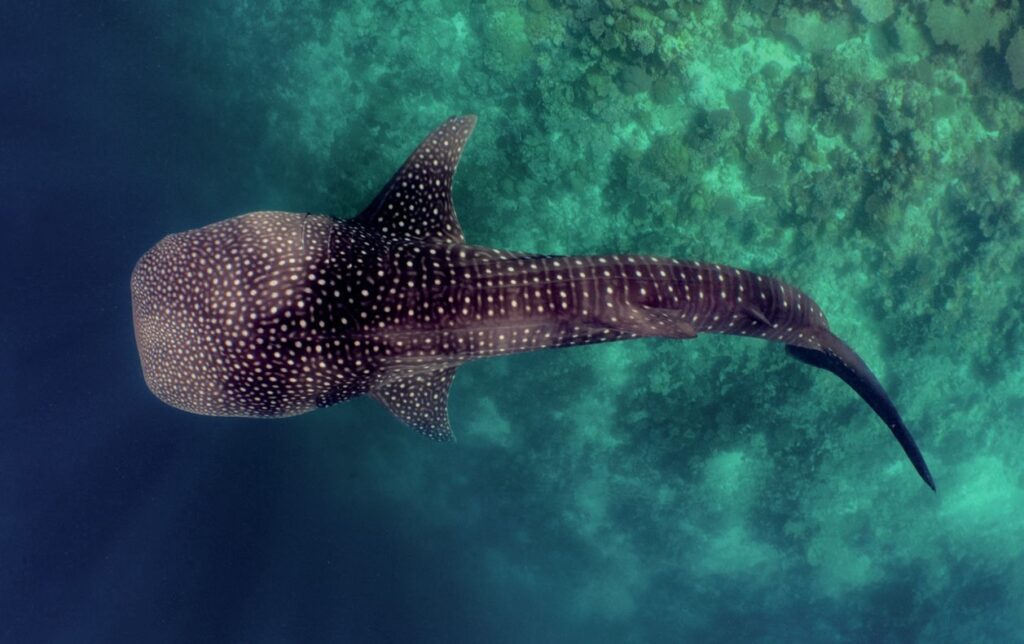
Whalesharks are common here, so you’ve got an excellent chance of spotting them. The Maldives Whale Shark Research Programme promotes responsible interactions with these beautiful animals, so follow their code of conduct.
Pay close attention to your depth and natural lighting when scuba diving and photographing sharks. A wide-angle lens is best because of its huge depth of field (I use a 16-35mm). I suggest starting at a shutter speed between 1/125 and 1/200 to freeze motion.
Aperture: shoot between F8 and F11. I have found more light is required, given sharks are usually found at depth. You can use strobes if they are not too far away. I have Inon Z-330 strobes which provide wide-angle coverage. It is a personal choice.
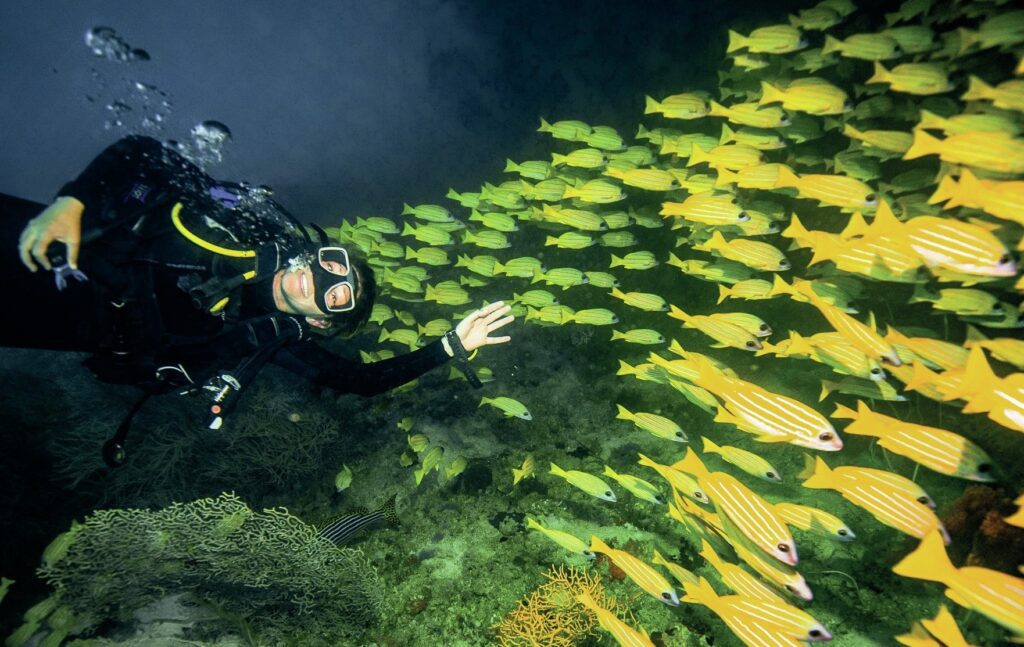
Resort or liveaboard?
I am a big fan of liveaboards. I like knowing I have three dives a day and a possible night dive to look forward to. Everything is included, so you can sit back, relax after a dive, hang out with everyone, and talk about the amazing marine life you just saw.
At the end of the day, someone might bring out a guitar as you enjoy a sundowner and watch the sunset on the horizon. You never know if you will be woken up in the night because a whaleshark is off the back of the boat. Liveaboards offer a range of benefits for diving enthusiasts.
Once on the liveaboard, there is no need to travel further, providing the opportunity to dive remote locations and undertake night dives.
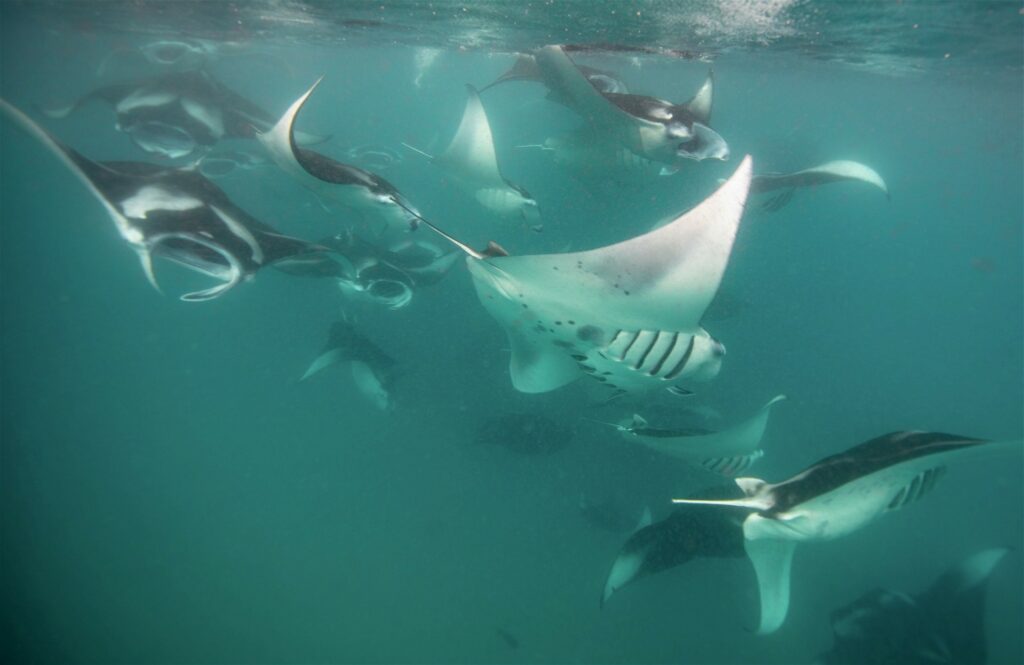
Did you know?
The Maldives reef manta rays are year-round residents, migrating across the country’s 26 atolls in tandem with the changing monsoons and the resulting shifts in zooplankton abundance and distribution
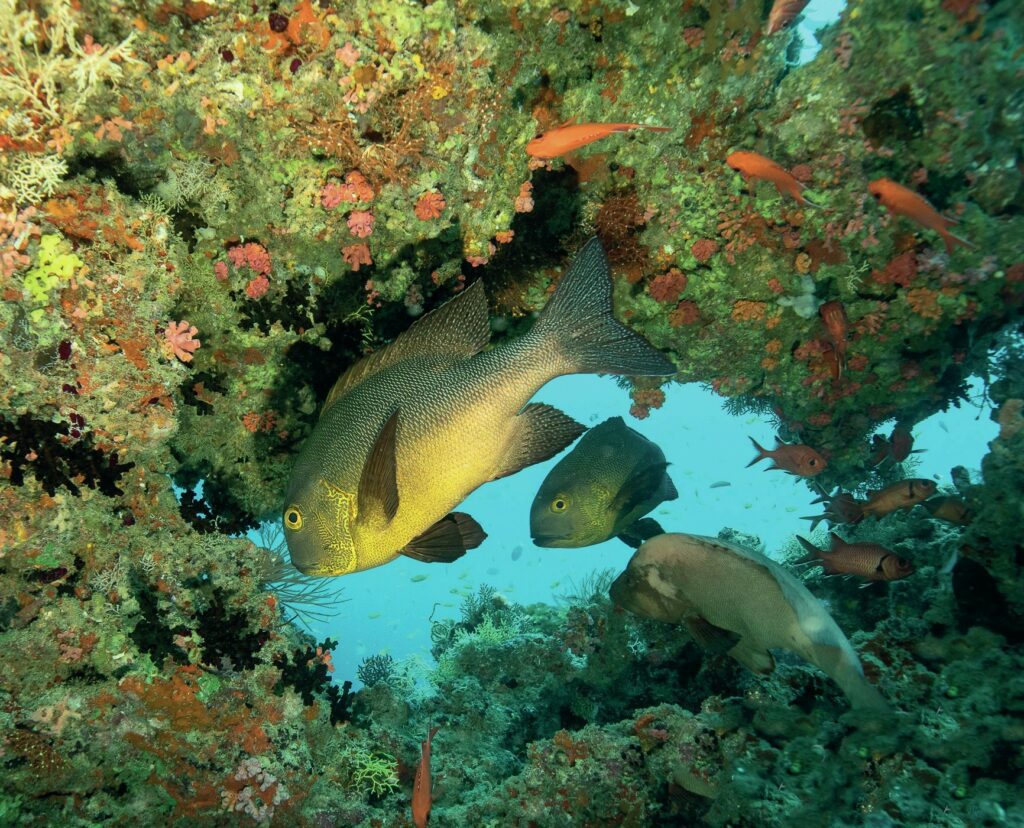
Meeting new dive buddies is also a great perk, as is gaining more diving experience and getting more dives for your money. Beginners, in particular, can benefit from the professional dive instructors and dive briefs that accompany dives at unknown locations.
The all-inclusive experience is another plus, and many operators contribute to environmental groups to ensure that diving practices are sustainable. Early arrival at dive sites means less crowding, and the ability to move between sites easily provides maximum diving experiences.
On the other hand, resorts can offer some great perks, including beach walks, great food and drink, good wifi, naturally beautiful islands and house reefs. Plus, you don’t have to worry about seasickness. Just be advised that it won’t be easy on the local islands to find alcohol off-resort, as the Maldives is a Muslim country.
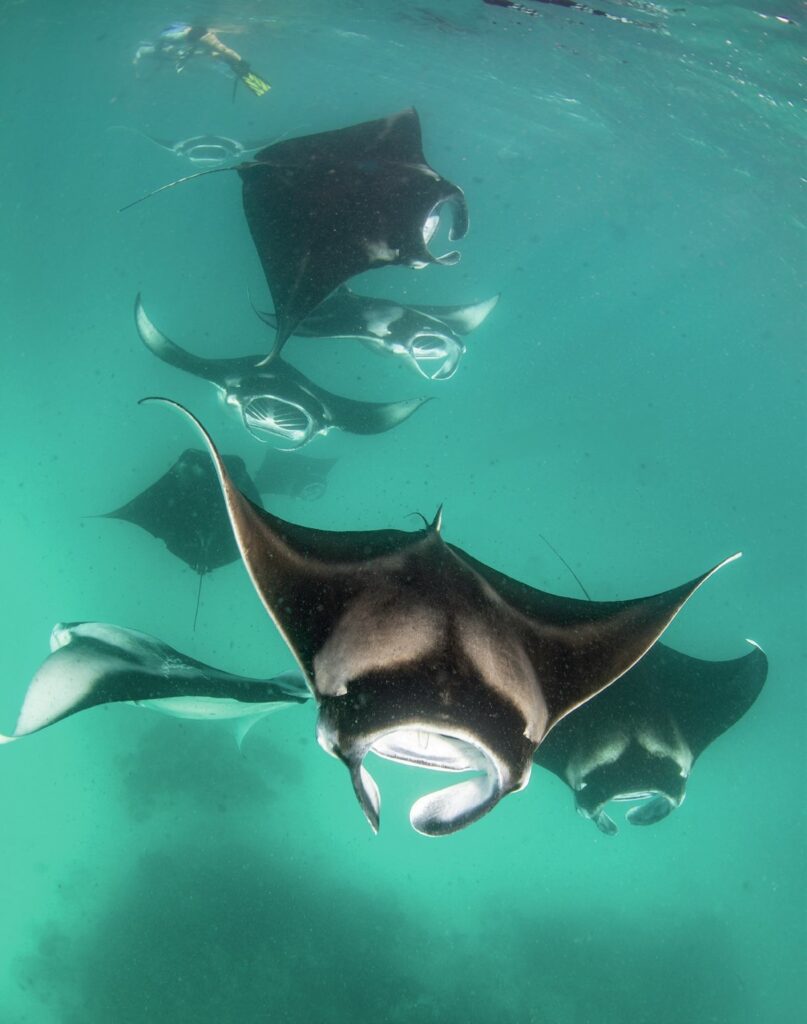
The Maldivian culture is fascinating and unique; the locals will make you feel welcome. It’s inexpensive and an unforgettable experience. I recommend travelling with a scuba group on an organised expedition. It’s a great way to meet like-minded people, learn new techniques, share diving stories and experiences with other divers who will inspire you without worrying about bookings and travel arrangements.
About the author
Amanda Delaforce is a marine biologist and underwater photographer who has led ethical group dive tours to the Maldives for over a decade. Follow her on Instagram and Facebook.
This article was originally published in Scuba Diver ANZ #59.
Subscribe digitally and read more great stories like this from anywhere in the world in a mobile-friendly format. Link to the article
